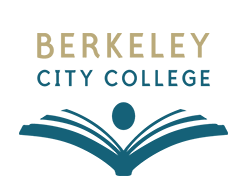- What is an APPLE (or “BIG FIG”)?An APPLE (Action Plan Project for Learning Excellence) is an opportunity for small groups of faculty/staff to carry out action plans from previous FIGs or assessments (SLOs, ILOs, CCSSE, etc.). Participants create or implement a concrete product or action that will lead to increased student success. In brief, FIGs and other assessments identify problems and make recommendations, and APPLEs take the next step to solve the problem.
Examples:
- Revise a class, curriculum, program sequence, etc. to meet needs identified by the inquiry/assessment
- Make a website of shared resources for a particular need
- Create a collection of model and non-model student work aligned with a rubric
- Create a shared rubric/formative assessment project
- Design and start using a process that better meets student needs in any student services area
What are the goals of the APPLE project?
- Improve student learning, retention, and success
- Close the assessment loop by putting recommendations into action
- Increase collaboration
- Increase involvement in and understanding of assessment processes
What exactly do people do in an APPLE?
- Look at previous findings and recommendations from FIGs/Assessments
- Find a few sources of other existing data relevant to your topic to establish a context/rationale
- Plan and create or implement your product/action
- Conduct a short evaluation of the product/action, or make a plan for doing so if you need more time
- Document product/action as
- Brief written report
- Brief presentation at the TLC Symposium in the Spring
What are the required activities for team members?
- Each person submits their own time sheet and other paper work as requested by the TLC Coordinator or BCC staff
- Meet at least four times over the year:
- An initial meeting where you will refine your plan, develop a timeline, and take a look at previously published research on the issue
- Meet at least three other times to complete, implement, and evaluate your work.
- Participate in the TLC Spring Symposium where you will present your project to the BCC community
What else does the leader need to do?
- Ensure that the project is moving along on schedule
- Ensure that all team members are included in the collaboration
- Maintain contact with TLC coordinator and ask for support when needed
- Submit communications on time to bcctlc@peralta.edu (all through email)
How much time will this take?
Estimated total time input is about 20+ hours for APPLE project leaders and participants. While we appreciate enthusiastic participants who do thorough inquiry, APPLE projects are intended to be small enough to complete in a few months with a few meetings and a few hours of outside work. They should inform and improve your teaching or other work experience, not interfere with it.
What about pay?
Stipends are available. Participants that are approved will receive a stipend: generally it is $300 per participant and $400 for the group leader but the amount may change year to year based on the funding allocation and the project proposed. Stipends are received usually after the end of the academic year and the final reports have been received. Priority for stipends will be determined according to these criteria:
- people working on projects that clearly meet the objectives of the criteria below
- new participants in TLC projects (part-time or full-time)
Please note that you are welcome to run a curriculum project even if we run out of stipend allocations. Also, some projects might have a small core group of 2 or 3 people doing most of the work who request stipends, but others may participate in a focus group, pass out surveys, etc. without committing much time or requesting compensation. All community members are invited to the TLC Symposium.
What are the criteria for selection?
- The inquiry question is focused (click here for more details on how to develop a strong inquiry question)
- The inquiry focuses on at least one of the following areas:
- Instructional design: Supports collaborative professional development
- Guided Pathways: Supports institutional student success
- Student equity: Supports student completion and success
- Basic skills students and/or instruction
- Retention, persistence, equity, and success of all students
- Outcomes assessment and/or “closing the loop”
- Radical educational models or forms of inquiry that push the boundaries of learning and pedagogy
- The proposal exhibits a sense of urgency, passion, and interest in the issue
- The inquiry, where applicable, leads faculty and staff to gather meaningful information from students to better understand their learning and experiences
- The inquiry should forge new ground rather than merely substantiating claims or research already documented
- The inquiry should be completable in the time proposed
- [If applicable] Teams should be inclusive or interdisciplinary.

 Canvas
Canvas
 Donate
Donate
 Let's Talk!
Let's Talk!

Comment section